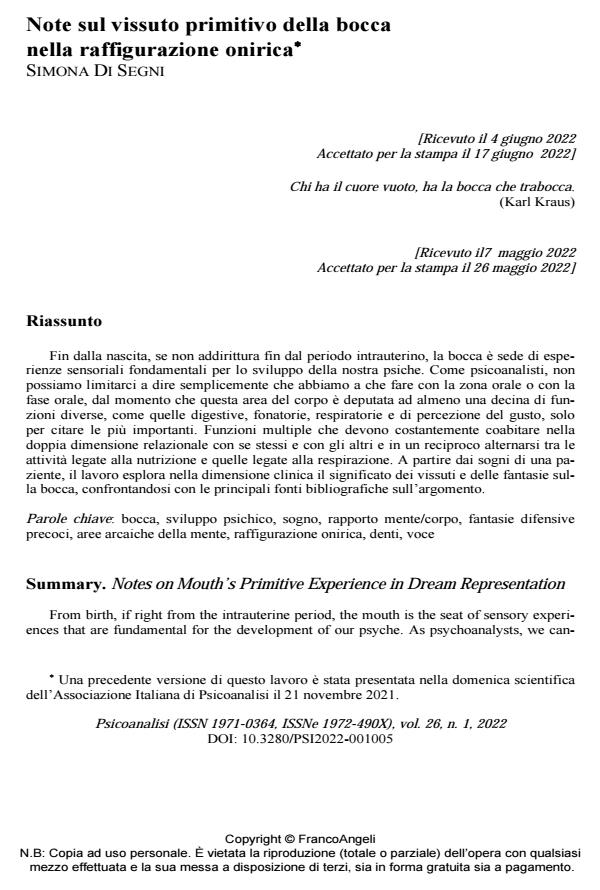Notes on Mouth’s Primitive Experience in Dream Representation
Journal title PSICOANALISI
Author/s Simona Di Segni
Publishing Year 2022 Issue 2022/1
Language Italian Pages 26 P. 47-72 File size 266 KB
DOI 10.3280/PSI2022-001005
DOI is like a bar code for intellectual property: to have more infomation
click here
Below, you can see the article first page
If you want to buy this article in PDF format, you can do it, following the instructions to buy download credits

FrancoAngeli is member of Publishers International Linking Association, Inc (PILA), a not-for-profit association which run the CrossRef service enabling links to and from online scholarly content.
From birth, if right from the intrauterine period, the mouth is the seat of sensory experiences that are fundamental for the development of our psyche. As psychoanalysts, we cannot limit ourselves to simply saying that we are dealing with the oral area or with the oral phase, since this area of the body is responsible for at least a dozen different functions, such as digestive, phonatory, respiratory and taste perception, just to name the most important ones. These multiple functions must constantly coexist in the double relational dimension with oneself and with others and in a reciprocal alternation between activities related to nutrition and those related to breathing. Starting from a patient’s dream, the present paper explores the meaning of experiences and fantasies about the mouth in the clinical dimension, comparing the main bibliographic sources on the subject.
Keywords: Mouth, psychic development, dream, mind/body relationship, early defensive fantasies, mind’s archaic areas, dream representation, teeth, voice
Simona Di Segni, Note sul vissuto primitivo della bocca nella raffigurazione onirica in "PSICOANALISI" 1/2022, pp 47-72, DOI: 10.3280/PSI2022-001005